Are no-shows costing your veterinary practice time and money?
If patients don’t receive a reminder from your practice, there’s a high probability that they will forget the appointment. In fact, The AAHA reports a 9% industry-wide no-show rate in the veterinary industry. That means for roughly every 10 to 11 appointments you have per day, one won’t show.
What’s the problem with no-shows? Valuable appointment slots are going to waste, when paying customers are patiently waiting for an opening.

You could try to use phone calls to reduce no-shows, however, often the phones go to voicemail and clients still miss appointments. Some practices charge clients for missed appointments, but that doesn’t always go down very well, and you may end up losing the client in the long run.
One of the best to reduce no-shows and missed appointments is through the use of effective veterinary practice software.
Automated vet appointment reminders can send reminders to clients, significantly reducing the probability of no-shows. This is important particularly as forgetfulness is the number one reason for no-shows. These reminders can take the form of automated text messages, phone calls, or push notifications.
Additionally, giving clients more opportunities to schedule an appointment, including after hours, through the use of software, could help boost business without any additional pressure on staff members.
What are Veterinary Software Programs Used For?
Veterinary practice management software is a tool designed to make life easier for vet practice owners, managers and staff. It is used to manage appointments and scheduling, but that is by no means its only use. The software could span a wide range of practice management solutions, and a good veterinary practice software package should include some or all of the following features:
Automated “patient” reminders sent to clients via text messaging, email or in-app push notifications is an effective way to increase bookings and revenue.
Inventory management integration
By fully integrating the software with your inventory, you can reduce the amount of time spent searching, counting and ordering stock. It can also help you track theft, and provide accurate reporting that solves pricing or profitability issues.
Storing and maintaining pets’ electronic medical records
High-quality veterinary software not only keeps medical records organized but can also give pet owners on-demand access to their pet’s health records. Thus, they are able to share the info easily with sitters, boarding facilities and groomers when needed. This also reduces high-volume requests for routine records like vaccines and lab results.
Reporting
The software can be used to generate a list of reports including reports for revenues, products or services sold, invoices and end-of-the-day reports. Being able to access data easily will help to save time and increase efficiency in the practice.
Invoicing and accounting
Invoicing features make it easier to search and select products and services to add to an invoice. They usually allow bundles to be added for quicker invoicing and various payment methods can be added. It could also show whether there is an existing balance or credit on the client’s account.
Client’s database
This helps the clinic maintain a robust database and share clients across various locations. It also enables the sharing of financial reports, product reports and other reports between different locations.
Client communication tools
A strong software solution will be able to seamlessly automate appointment and prescription refill requests. Other functions may include the ability to text your veterinary clients, accept contactless payments, share animal health records, and offer monthly payment plans.
Which are the most useful features of veterinary software programs?
This depends on various factors, including the readiness of staff to embrace technology and the ease of use, features, and flexibility of the software. Some of the most popular features include appointment scheduling and invoicing, but there are many more ways in which the software can help improve practice performance.
Who uses veterinary software?
Technological advancements in pet care have led to an increase in the use of veterinary software in animal hospitals and clinics. As the need for efficient information management systems increase, this area is set to grow even more in the future.
Vet practices are also increasingly turning to technology to help manage information and systems, as well as meeting customer-driven needs.
In order to remain competitive, practices will need to take account of the fact that more and more pet owners rely on digital and mobile technology and will expect practices to be up to speed with the latest technological developments.
Are veterinary software programs worth it?
This depends on the individual needs of your practice and the vet practice manager, and your team’s willingness to embrace technology.
If the plan is to use the veterinary software only for invoicing or if there is resistance to software, you may only need basic features.
However, it is worth bearing in mind that modern veterinary practices rely on cloud-based veterinary practice management software. Veterinary students today are learning practice management software during their studies. They will no doubt be incorporating these into their own practices in the future. When considering an investment in software, look for solutions that are simple to learn, user-friendly and which include ongoing technical support.
There can be little doubt that veterinary software management programs are the future, and could really help your practice to grow and stay competitive in the crowded veterinary care space through increased efficiency and performance.
Of course, excellent software is not an automatic fix for poor customer service and inefficient management, and any software is only as good as the guidance and training provided to its users. Nevertheless, choosing a powerful software solution and implementing it with effective training and maintenance from a reputable software provider is the number one way to increase standards and improve customers satisfaction in your practice.
How to choose the right veterinary software for your practice:
Working out which software you need − and which would be a good fit for your practice − depends on many different factors. It is always a good idea to start with your practice goals. Once you understand what you’d like to achieve, it becomes easier to choose the tools to help you get there.
Some important considerations include:
- Whether you need a cloud-based program or an in-house system. There are pros and cons to both. It depends on how many team members will use the program, your existing hardware, and other factors.
- Consider whether the program offers tools that will boost the client experience such as confirming appointments online, automated reminders and other client-convenient options.
- Consider future needs and choose a program that will grow with your practice. Consider services you are likely to need as the practice expands. Also, look for software that is updated regularly.
- Definitely consider the back-up and ongoing support offered by the software provider – including live training − if possible during the onboarding process.
- Budget is obviously an important consideration. Ask if the provider offers payment options and also pay attention to how much the software is likely to cost in the long term.
If you’re looking to push your veterinary practice even further, take a look at VitusVet − it is the leading veterinary software program that provides everything you need to streamline workflows, grow revenue, increase pet owner satisfaction, improve client communication and increase client loyalty.
Some of the amazing features offered by VitusVet include:
- The option for pet owners to request appointments by text, email, website, social media or branded mobile app.
- Automated reminders which help to reduce no-shows
- Seamless, remote payment processing
- Real-time booking metrics, including unconfirmed appointments and pending requests
- Improved client communication and understanding of clients
- Automated post-appointment surveys which help to improve client satisfaction and boost business through better understanding of clients.
Find out more and request your demo today!
 by a veterinarian
by a veterinarian


